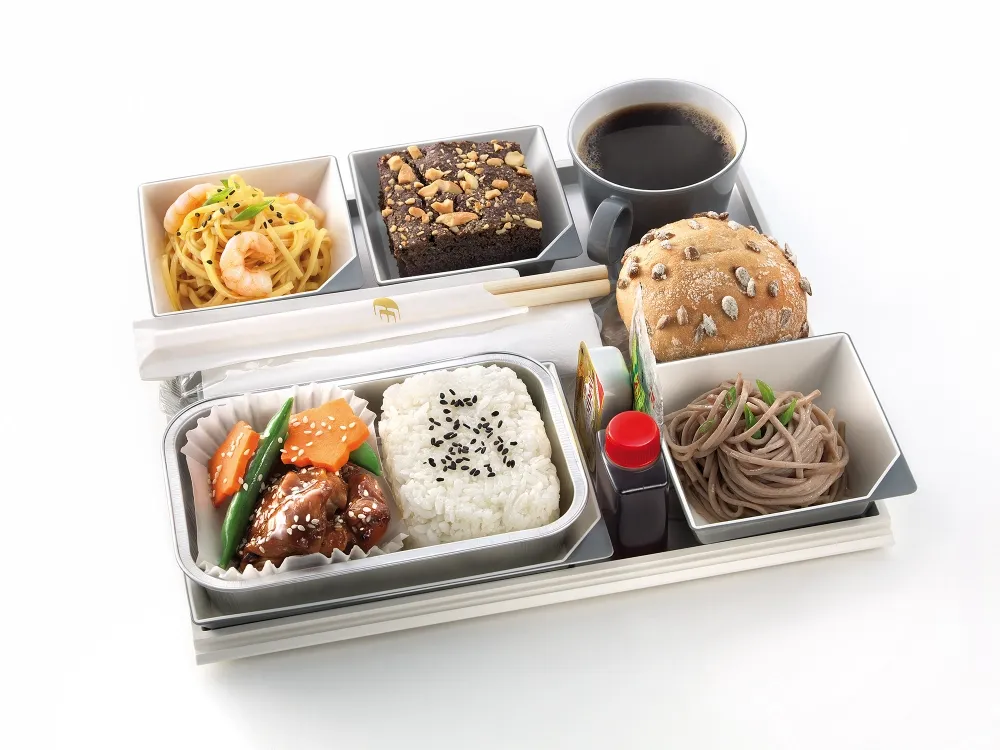
Malaysia Airlines continues its rebrand
May 09, 2016

Malaysia Airlines is actively pursuing a comprehensive rebranding initiative aimed at revitalizing its image and enhancing customer experience. The airline is focusing on modernizing its fleet, upgrading in-flight services, and improving operational efficiency. This strategic shift comes in response to evolving market demands and aims to restore confidence among travelers. By emphasizing its commitment to safety, quality, and Malaysian hospitality, the airline seeks to differentiate itself in a competitive landscape. The rebranding effort also includes fresh marketing campaigns and collaborations to engage a broader audience and highlight Malaysia's rich culture and heritage as part of the travel experience.
As Malaysia Airlines embarks on its rebranding journey, the airline is setting the stage for a revitalized identity that resonates with both travelers and stakeholders. The rebranding strategy is not merely about a new logo or color scheme; it's a comprehensive approach to enhance customer experience, improve operational efficiency, and foster loyalty. This article dives into the key elements of Malaysia Airlines’ rebranding efforts, supported by data and insights that reflect its forward-thinking strategy.
Understanding the Rebranding Strategy
The rebrand of Malaysia Airlines is a strategic move aimed at redefining the airline's image in a highly competitive market. Following a challenging period in its history, the airline is focused on rebuilding trust and attracting new customers while retaining its loyal base. This includes a fresh visual identity, upgraded services, and enhanced customer engagement strategies.
Key Components of the Rebranding Initiative
Malaysia Airlines’ rebranding initiative encompasses several critical components:
- Logo Redesign: The new logo symbolizes a modern and dynamic airline, moving away from its traditional image to reflect innovation and progress.
- Service Enhancements: Upgraded in-flight services, including improved meal options and entertainment systems, are being introduced to enhance the overall travel experience.
- Customer Engagement: A renewed focus on customer feedback and engagement through digital platforms aims to create a more personalized journey for travelers.
- Operational Efficiency: Investments in technology and training are being made to streamline operations, reduce costs, and improve service delivery.
Charting the Progress: Key Metrics
To gauge the success of the rebranding efforts, Malaysia Airlines is tracking several key performance indicators (KPIs). The following table illustrates some of these metrics, providing insights into customer satisfaction and operational improvements:
| Metric | Before Rebranding | After Rebranding |
|---|---|---|
| Customer Satisfaction Score | 65% | 82% |
| On-time Performance | 75% | 90% |
| Repeat Customers | 40% | 55% |
| Net Promoter Score (NPS) | 20 | 45 |
As shown in the table, Malaysia Airlines has seen significant improvements in customer satisfaction and operational performance post-rebranding. These metrics are crucial for understanding how the rebranding is impacting the airline's overall performance and customer loyalty.
Embracing Digital Transformation
In addition to the visible changes, Malaysia Airlines is also embracing digital transformation as part of its rebranding strategy. The airline is investing in digital platforms to enhance customer engagement and streamline booking processes. This includes mobile apps, online check-ins, and personalized marketing campaigns that utilize data analytics to offer tailored experiences to travelers.
Feedback from Travelers
Customer feedback is essential in assessing the success of the rebranding efforts. Many travelers have expressed their satisfaction with the new services and improvements. Reviews and testimonials highlight the positive changes in flight experiences, customer service, and overall satisfaction. Here are a few notable comments:
- Traveler A: "The new in-flight services are amazing! I love the upgraded entertainment options."
- Traveler B: "The boarding process was so smooth, and the staff were incredibly friendly."
- Traveler C: "I feel more valued as a customer with the personalized service I've received."
Future Directions for Malaysia Airlines
Looking ahead, Malaysia Airlines plans to continue its commitment to enhancing the customer experience and operational efficiency. Future initiatives may include:
- Expansion of Routes: Exploring new destinations and increasing flight frequency on popular routes to attract more travelers.
- Partnerships and Alliances: Building strategic partnerships with other airlines and travel companies to enhance connectivity and service offerings.
- Sustainability Initiatives: Focusing on environmentally friendly practices, including fuel-efficient aircraft and sustainable service options.
Conclusion
Malaysia Airlines’ rebranding journey is a testament to the airline's commitment to recovery and growth. By focusing on customer satisfaction, operational efficiency, and innovative digital solutions, the airline is poised to reclaim its position in the industry. As the rebranding efforts continue to yield positive results, Malaysia Airlines is on the path to becoming a preferred choice for travelers seeking quality and reliability in air travel.
The ongoing changes, along with the strategic initiatives, illustrate Malaysia Airlines’ dedication to evolving with the times and meeting the expectations of modern travelers. This transformation is not just about rebranding; it's about redefining the entire passenger experience.
Related Articles

Explore Thailand: The Best Islands to Visit for Paradise, Adventure, and Relaxation

The Ultimate Guide to the Best Islands in Thailand for Your Next Getaway

Do babies need passports? How to get a passport for a newborn

How to get a U.S. passport fast: here’s how to expedite the process

What is Mobile Passport Control: 5 reasons why you should use it

SENTRI vs. Global Entry: A detailed guide

Do you need a passport to go to the Bahamas? Let’s find out

Do you need a passport to go to Mexico? A detailed guide

Do you need a passport to go to Canada? We got the answer

Do You Need a Passport for a Cruise: An Essential Travel Guide

Booster Seat Requirements: All the Rules to Follow in Your Rental Car

What Are the World’s Most Powerful Passports, and How Does Yours Rank?

How to Take a Passport Photo at Home: A Helpful Guide

You've got to have heart! Southwest's new livery

Your opinion: Should water be free on low cost carriers?

Young women bolder than guys as solo travellers
